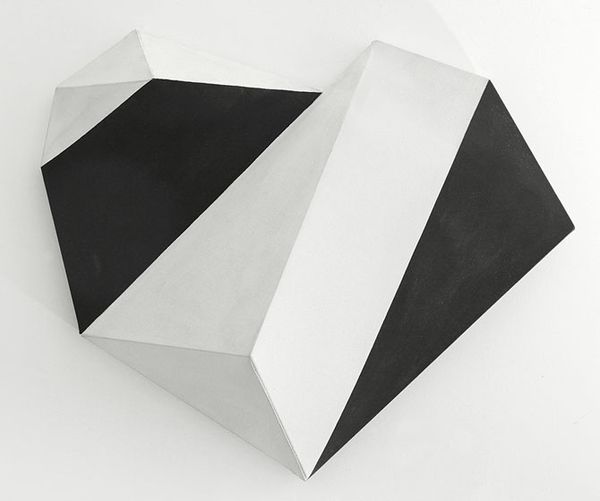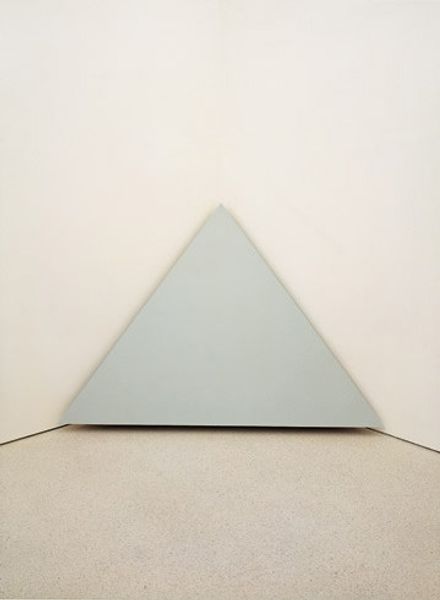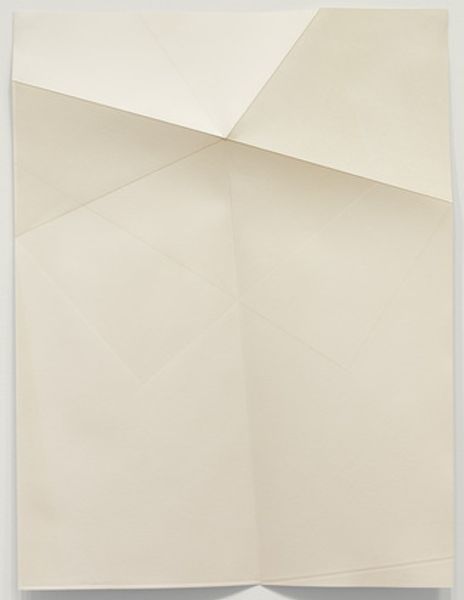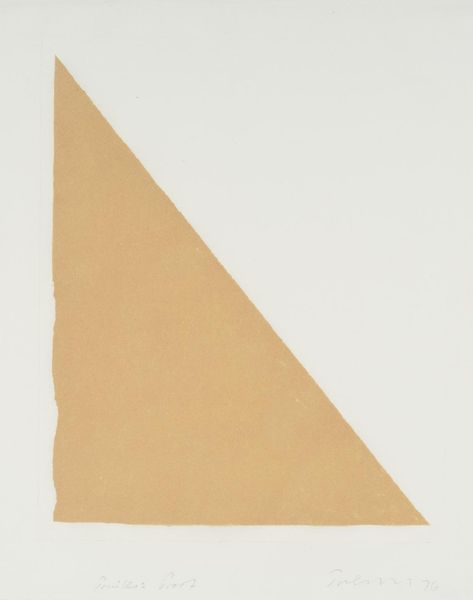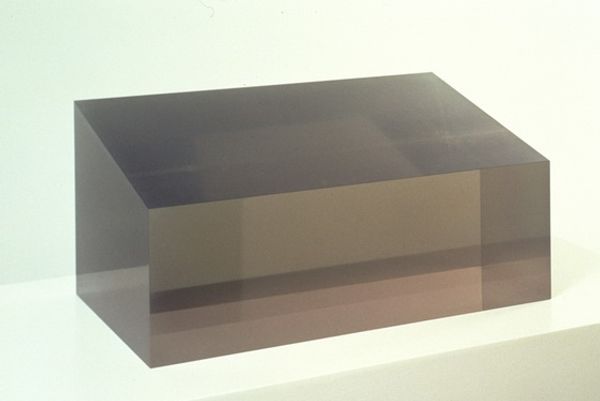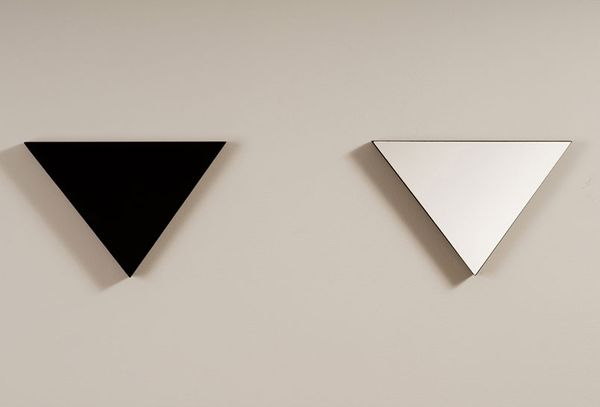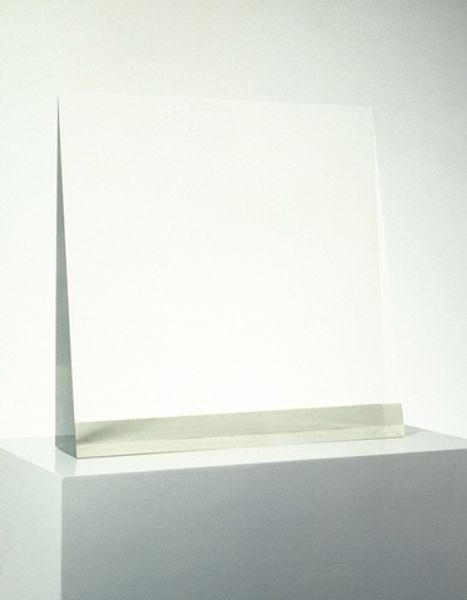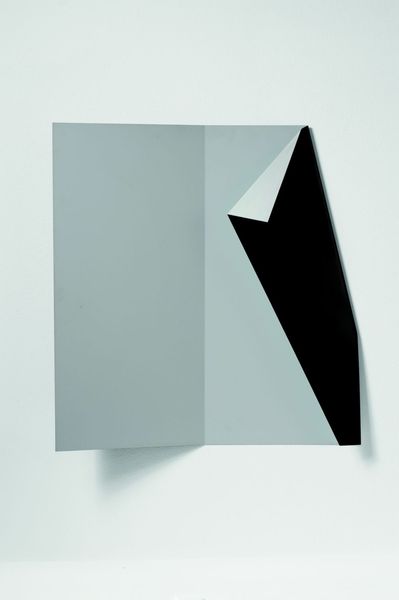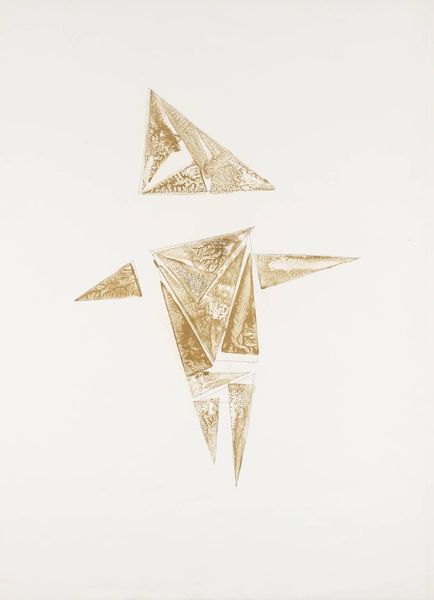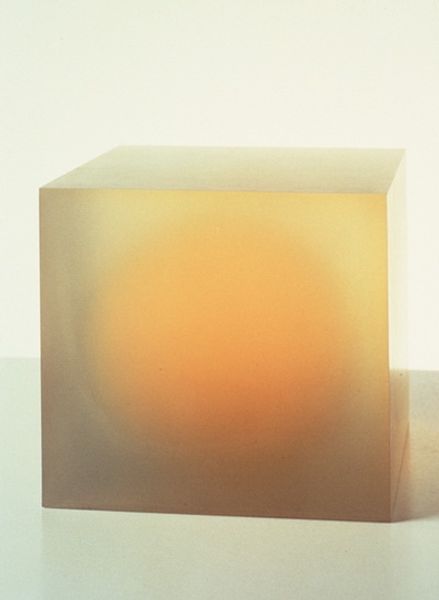
metal, sculpture
#
conceptual-art
#
minimalism
#
metal
#
geometric
#
sculpture
#
abstraction
#
hard-edge-painting
Copyright: Peter Alexander,Fair Use
Editor: Right, let’s talk about Peter Alexander's "Pyramid" from 1967. It seems deceptively simple, almost like a child's toy, but there's a kind of meditative quality to the way the light plays across its surface. It seems to be metal, sitting on some white platform, so simple. What do you see in this piece that I might be missing? Curator: Well, it's all about light, isn’t it? Like California in the '60s… Think of those hazy sunsets bleeding into the ocean. I bet Alexander was trying to trap that fleeting luminescence. The "Pyramid," though rigidly geometric, has this incredibly ethereal presence. Did you notice how the angles are just *slightly* off? It keeps it from being too sterile. It’s like, perfect geometry striving to break free into something… well, imperfectly beautiful. Editor: I see what you mean. It's like he's wrestling with the tension between cold, hard geometry and the fleeting nature of light. Curator: Exactly! And don’t forget the historical context. Minimalism, hard-edge painting...artists stripping away the excess to get to the bare bones of form and perception. I imagine Alexander thinking: what is the purest shape? How can I make it shimmer? Editor: It makes me think about ancient civilizations too. The pyramids in Egypt. The concept of time and endurance... contrasted with the ever-changing light. Curator: Precisely. There's a timelessness about the pyramid form itself, anchoring it to millennia of human symbolism, even as Alexander bends the form slightly off. What have you learned? Editor: To look past the simple geometry and see the light, the subtle imperfections, the echoes of history. It's way more complex than I initially thought. Curator: Art always is, isn't it? Just have to spend time with it, let it work its magic. It talks to you if you’re prepared to listen.
Comments
No comments
Be the first to comment and join the conversation on the ultimate creative platform.
